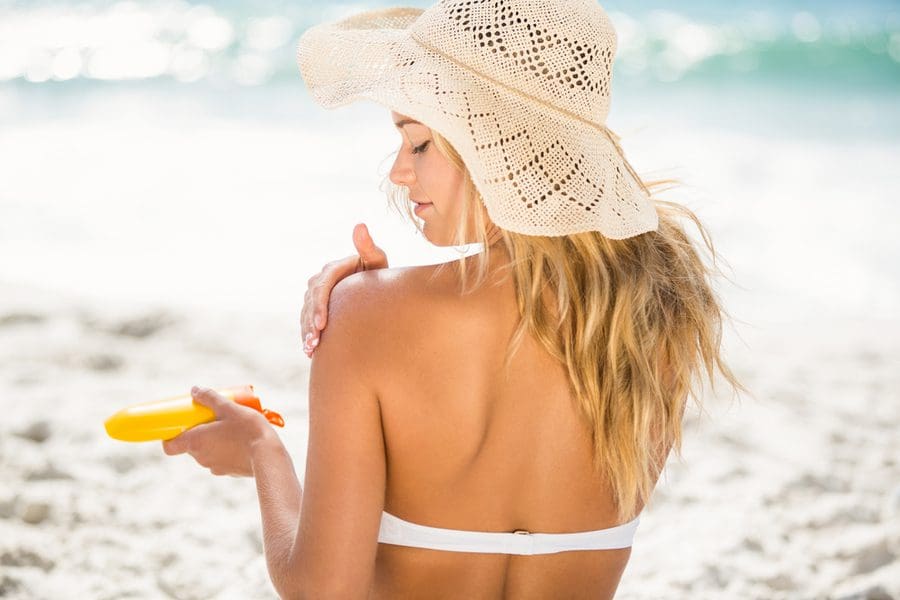Think twice before you slather on sunscreen before a swim. Pollution killed 85 percent of the Caribbean coral reefs sometime before 1999, and scientists can trace the irreparable damage to chemicals in sunscreen. Chemical sunscreens protect your skin by transforming harmful UV rays into heat, but these chemicals also bleach coral. Since coral reefs support nearly 25 percent of all marine life, harming them threatens the ocean’s entire ecosystem.
Does this only pertain to people swimming in the ocean? No! “Every drop counts and every individual can make a difference, even those who live inland,” according to the Inland Ocean Coalition. “Chemical sunscreens used anywhere in the world end up in our water systems, and eventually, in our ocean, so it’s just as important for people in landlocked states and countries to choose safe sunscreen.”
Researchers discovered certain chemicals – mainly oxybenzone and octinoxate – are deadly to coral reefs. One drop of oxybenzone can contaminate enough water to fill almost seven Olympic sized pools. Concentrations more than 10 times higher than that have been measured at popular beaches in Hawaii. Here’s one way to look at the size of the problem: a 2008 study estimated about 14,000 tons of sunscreen wind up in waters that are home to coral reefs each year.
What can you do to help save coral reefs from further damage and protect marine life?
Check the label.
Check the active ingredients on the back label of your sunscreen. Skip sunscreen that lists these ingredients:
- oxybenzone
- octinoxate
- octocrylene
- parabens
- methyl paraben
- butyl paraben
- phenoxyethanol
- PABA (Para-aminobenzoic acid)
Seek out a safer alternative.
Before purchasing your next bottle of sunscreen, look for a safer option, and avoid those containing oxybenzone and octinoxate. Any chemical sunscreen that works by absorbing UV rays and converting them to heat would be considered reef-safe if they do not contain oxybenzone or octinoxate.
An alternative to chemical sunscreen is mineral sunblock. Mineral sunblock remains on top of your skin to deflect UV rays. These use the minerals zinc oxide and titanium dioxide with particles that aren’t small enough to be absorbed by marine life. They’re easy to find because they are labeled “non-nano” or “reef-friendly.” One option is non-nano titanium dioxide, while another is a non-nano zinc oxide-based sunscreen formula.
Certain preservatives found in sunscreens are toxic. Check the ingredient list and avoid sunscreens that contain parabens such as methylparaben, butylparaben, or phenoxyethanol, which was originally used as a mass fish anesthetic.
Look beyond sunscreens.
While it’s stunning to realize that oxybenzone and octinoxate are used in more than 3,500 chemical sunscreens, they’re also popular in many other personal products that contain SPF. These two chemicals are found in moisturizers, foundations, and primers. Check the labels on these products as well.
Ditch the aerosols.
Aerosol sprays disperse microscopic chemical ingredients into the atmosphere. Plus, those tiny droplets are super easy to inhale into your lungs.
Trade sunscreen for UPF clothing.
The UPF symbol on clothing stands for Ultraviolet Protection Factor and indicates how much of the sun’s UV rays are absorbed by fabric before striking your skin. For example, clothing rated UPF 50 only allows 2 percent of the sun’s rays to make it through. When you wear sun-protective clothing on the beach or at the pool, you can use much less sunscreen. Good UPF sunwear and sun accessories reduce the damage sunscreen has on reefs and marine life while still protecting your skin.






